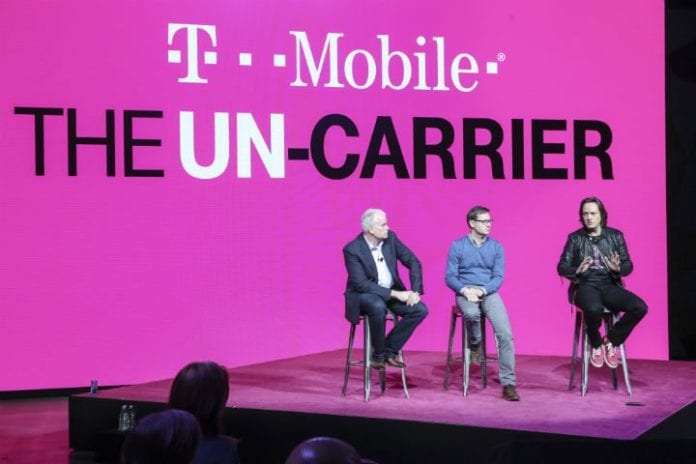This is just the beginning, says the Industrial Internet Consortium. Preoccupations with technology are only ever fleeting. The stakes are higher; the future is still being mapped out. 5G – so what? Who cares, really, so long as it works? Connectivity is a utility service, afterall, albeit one that is multiplying and mutating, and making change possible.
The point is only what industry does when it is connected. Connectivity, in whatever form, won’t bring digital transformation by itself; industrial revolution will come from everything that goes on top, and from the convoluted cultural and social inputs, tangled like a ball of snakes, that feed in and out of this digital architecture.
“Yeah, I don’t care,” says Stephen Mellor, chief technology officer at IIC, when asked how to advise on the array of IoT connectivity technologies on offer. “I’m completely and utterly indifferent; my indifference is unbounded. I don’t care whether it comes from a coal fired power station, or from nuclear, or solar. I don’t care – just give me power. Give me connectivity.”
It is rhetorical, of course; green concerns about power generation are besides the point, here. Connectivity should be available on tap, just like water and electricity. The complexity afflicting the industrial IoT space is not, strictly, technology related. The drugs do work; the proofs have been run.
It is just the patients are all different. Prescriptions for digital change are not generally transferrable. “Tying yourself to 5G, or whatever the latest thing we’re talking about, is silly. It’s not going to work. The specialization does not come from the technology; it comes from the market,” comments Mellor.
Mellor adds: “The technology industry lives on fear and fashion, accelerated by hype. But technologies don’t matter. I mean, you have to have them – of course they matter in that sense. But in the overall scheme of things, this is a transformation of the economy, which has social impacts, and a whole variety of things about how we structure things.”
He is speaking, back stage, at IoT Solutions World Congress 2019 in Barcelona, a couple of weeks back. It is a show the Industrial Internet Consortium (IIC) has taken stewardship of. The message in Barcelona is the industrial IoT market has gone beyond ‘proof of concept’, showing the technology works, to proving its value.
This requires trials outside of labs, in the hands of users, of course – which requires collaboration across the divide; between tech vendors and tech sellers, between IT programmers and OT operatives. The IIC’s brief to keynote speakers and panel hosts in Barcelona was to incorporate end-user stories, whether triumphant or cautionary.
It should be applauded for this, even if sometimes the user stories tended towards the latter – like sellers’ stories, given voice by buyers – and the show reeked of future-selling, like every vendor summit. In real terms, the bonhomie does not easily carry over the divide. The OT set tells of sharp elbows and blunt designs, and puts the IT crowd back in its own ‘magic box’.
Does Mellor have a view of where the fault lies, in the blockage between tech know-how and domain expertise, or are both sides in the right and in the wrong? “That’s a given. And even if they weren’t, that’s what I’d tell you,” he says, chuckling.
But the show narrative tells of a market that has hit upon simpler use classes for industrial IoT, and easier negotiation between the sides. In particular, UK carrier Vodafone makes the case in Barcelona that there are just three IoT use ‘classes’ (asset tracking, remote monitoring, and industrial control) – and that the setup for most use cases (80 per cent of the work) can be divined from them, with only minor configuration (20 per cent) at the end.
It chimes with the IIC message about proving value, and going to scale. “Yes, it does,” says Mellor. But he warns, as well, that such simple use-case (or indeed, ‘use class’) definitions are not so easy. “It’s more complicated than that. It took the telecoms industry 10 years to define how to think about the seven [Open Systems Interconnection] layer model – the hardware, transport, application layers, and all that stuff. And it still got it wrong.”
The point is Vodafone is correct – or, at least, the interpretation of its story, as presented to the IIC in conversation in Barcelona, is right – that there are helpful commonalities between industrial IoT use cases, but it is also wrong, because it addresses only a single technology layer, when use cases are multi-layered and multi-angled, and crucially different at every turn.
It is way too-simplistic an interpretation of the IT/OT crossing, says Mellor; it does not consider differences in ‘general patterns’ between industrial disciplines. “I’ll give you an example,” he says, and presents ideas about how to deal with ‘degradation’ – where a product is corrupted – in digital factories and connected vehicles. He runs through alternative mechanisms: a ‘dead stop’ on the production line / traffic flow; an instrument to “pull the broken part out” of the line / traffic; some post-production / post-trip reckoning with the faulty item.
You see the idea – no solution is satisfactory; nothing is easy. He has another example, which is perhaps more effective. “You look at different kinds of surgery, and there are common things between them: you have a room, with surgeons, anaesthesiologists, nurses. And whether you are cutting off a leg or an arm, or you’re doing a heart transplant, it is all the same. Except the configurations are different: two surgeons, five nurses, and so on.”
Mellor continues: “Between the very high-level industry stuff that’s reasonably well defined, and the low-level connectivity, there’s all sorts of stuff in the middle there – which is not defined, and not easy to understand.”
To be continued…

